It’s easy to assume that the more insulation stuffed into your wall or ceiling cavities, the better the thermal resistance of this layer. However, because of the design of certain insulation materials and how they function, this compression actually compromises the ability of the material to stop heat.
Saying that compression is bad is an accurate blanket statement, but it can depend on the insulation material and the level of compression.

Insulation works by trapping air. Compressing air pockets means reducing R-value. Fiberglass, cellulose, and mineral wool are most severely affected by compression. Natural fiber and plastic fiber are slightly less affected. Compression is not a concern for foam.
What Compression Does to Insulation
Fiberglass
Fiberglass insulation works by creating lots of tiny pockets of “dead” air space.
Trapping air is a two-part function for fiberglass insulation.
Firstly, trapping the air slows or stops convection, which is when air naturally moves from an area of higher temperature to an area of lower temperature.
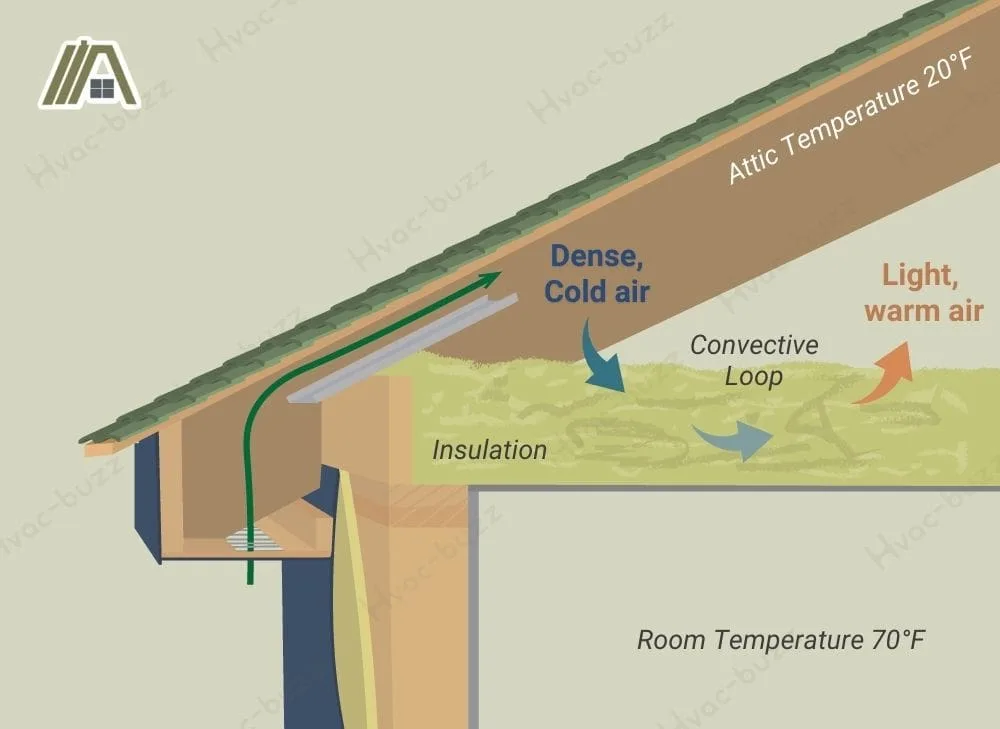
Secondly, trapped air has limited movement, and it becomes more still. Still, air is a poor conductor of heat energy via conduction.
Perfectly still, dry air would theoretically have an R-value of 3.6 per inch. In the early and mid-twentieth century, architects and builders believed that four inches of dead air space and a vapor barrier could insulate walls. Now, we know that air is never truly still, so we use insulation to slow down air.
So, the spaces in between fiberglass strands slow down air, reducing how much heat it can transfer as it passes through the walls or attic.
When you compress fiberglass, you reduce or destroy many of these dead air spaces.
In addition, compressed or settled fiberglass will likely not fill the entire cavity, so air will flow through the empty space.
In other words, compressed fiberglass leaves too many large air pockets (which allow air to flow) and not enough tiny air pockets (which slow down air).
Completely filling the space with compressed fiberglass would prevent the issue of large gaps. Still, the compression itself would reduce the R-value.
At the end of the article, you will find tables of R-value reduction for different levels of compression of the different insulation materials.
Cellulose
Cellulose works similarly to fiberglass in that it prevents heat transfer because air moves very slowly through it.
Packing it down runs the risk of limiting the amount of dead air space within the cellulose and creating larger gaps around the cellulose through which air can move.
Both cellulose and fiberglass come in two forms: blown-in loose fill vs. batts. All blown-in insulation runs the risk of settling under the weight of gravity and creating spaces for airflow. But cellulose settles more than any other type.
Standard levels of settling can cause cellulose to lose as much as 20% of its R-value over time. By contrast, fiberglass is only expected to lose about 2-4% of its R-value due to natural settling.
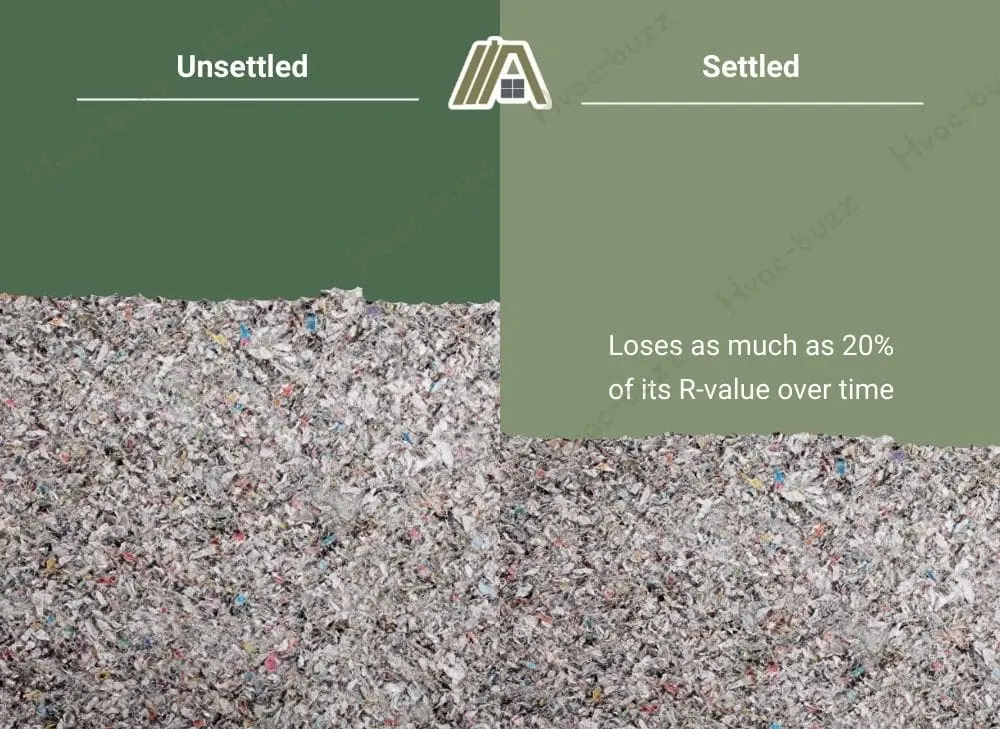
To combat settling, insulation contractors tend to install extra cellulose (aka “packing” cellulose) to eventually expand to fill in the gaps. Essentially, this type of “good” compression ultimately serves to fluff up the cellulose again.
This type of compression is done carefully and intentionally. Contractors understand how much extra is needed based on the type of cellulose.
Mineral Wool
Mineral wool (also called Rockwool and stone wool) works much like fiberglass. Its open-cell matrix traps air and prevents it from moving.
Yet mineral wool is much firmer and denser than fiberglass. Because of this, it has a higher R-value and is more expensive than fiberglass.
Mineral wool’s high density also means that it is more physically difficult to compress than fiberglass, which is more flexible and, in a way, fragile. In fact, mineral wool is basically already compressed in the manufacturing process.
You may have read elsewhere that because it is already so dense, mineral wool either won’t be harmed by compression or cannot be compressed in the first place.
However, testing shows that the R-value of mineral wool is reduced—though not as much as fiberglass or cellulose—especially at high levels of compression (more than 20%).
If you have to fit mineral wool into a shallower space than it is designed for, you can shave off a layer by slicing the batt with a knife.
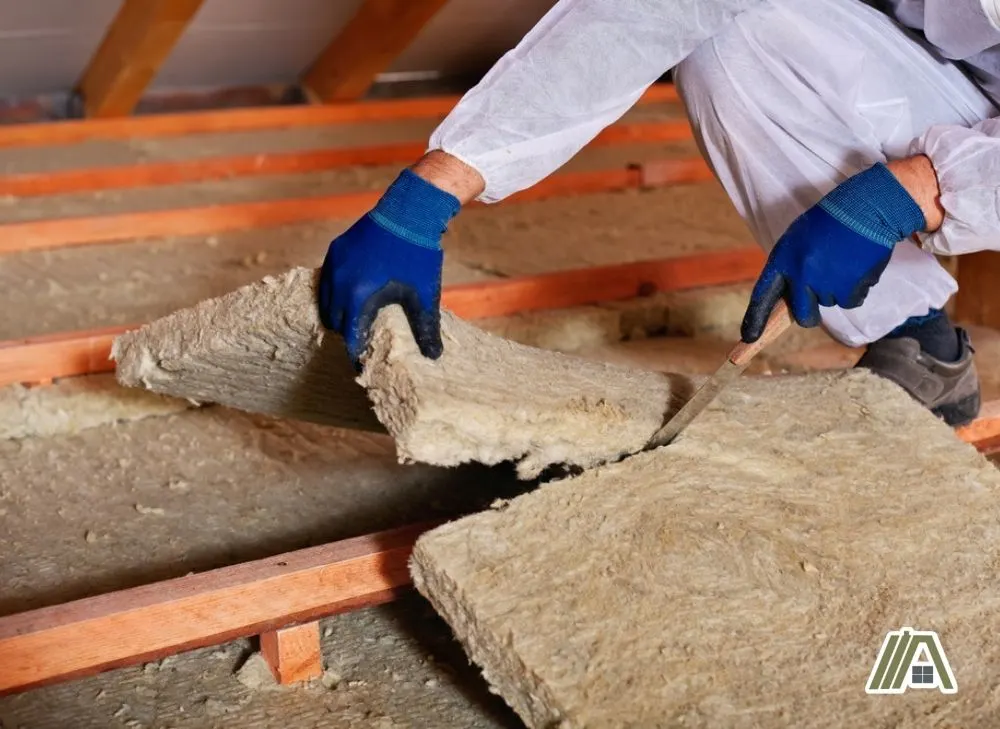
Whenever possible, buy insulation in the correct dimensions and use it as directed.
Natural Fiber
Natural fiber insulation includes many types of insulation made from things like sheep’s wool, cotton, and hemp.
Sheep’s wool insulation loses R-value when compressed, but it’s more resilient than fiberglass, cellulose, or mineral wool. Still, compressing sheep’s wool or cotton insulation will squish the natural air pockets created by the crimped structure of the fibers.
In some cases, the manufacturing process involves rolling the fibers into “air-capturing balls” that you should try not to squish too much. Every air-capturing pocket is a chance to prevent heat transfer.
Unlike mineral wool, which will return to its original thickness even after being significantly compressed in packaging, cotton batts sometimes do not spring back into shape.
There have been reports of certain cotton insulation failing to “fluff up” to full size when opened. In those unfortunate cases, the buyer cannot achieve the advertised R-value.
Hemp insulation is much stiffer and denser than sheep’s wool or fiberglass. It’s fairly difficult to compress with your hands and will bounce back after being compressed. Still, it traps heat in air pockets, so you should avoid permanently compressing it.
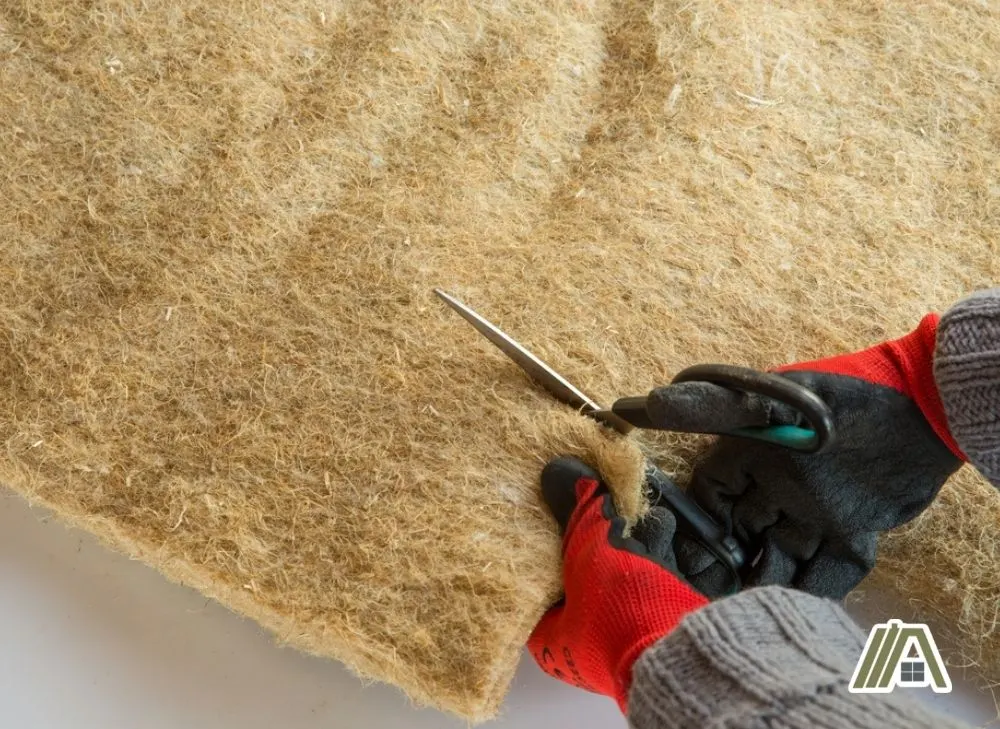
Plastic Fiber
Plastic fiber insulation is made from recycled milk bottles (polyethylene terephthalate or PET). The fibers from this type of plastic are formed into batts that somewhat resemble fiberglass but are denser.
Plastic fiber insulation behaves similarly to fiberglass batts in that it operates by trapping air inside small gaps between fibers. Again, this means that compression will reduce gaps and reduce opportunities for trapping air, ultimately reducing the R-value.
Because it’s already denser than fiberglass or cellulose, plastic fiber insulation will not decrease in R-value as dramatically as other types of insulation.
Plastic fiber and sheep’s wool decrease in R-value when compressed, but less than fiberglass and cellulose. Still, after 50% compression, you’re looking at a huge loss in R-value.
Spray Foam
Foam holds tiny air pockets, so you would think that compression could be an issue. However, there is not much discussion or concern among contractors about compressing spray foam insulation. There are several reasons for this.
Firstly, foam does not settle. This means that there are no issues with natural compression due to settling or with DIYers overfilling to counteract settling.
Secondly, you generally would not have a reason to compress spray foam. When fiberglass batts get compressed, it is sometimes because someone bought too thick of a batt for their wall cavity. By contrast, spray foam can fill any sized cavity, big or small.
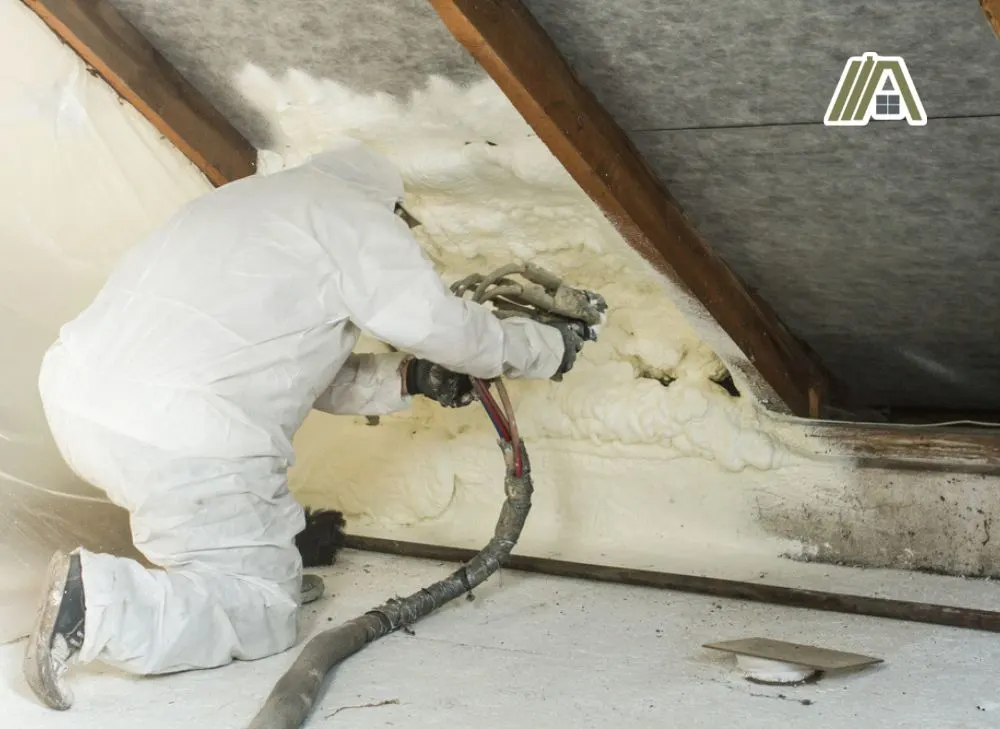
In fact, spray foam is often suggested as a way to avoid compressing fiberglass batts around windows or in awkward spaces.
Typically, the foam is sprayed in two-inch “lifts,” which are allowed to cure before the next lift, ensuring that you know how thick the cured layer ends up being.
At the end, you scrape off extra foam (“overspray”) before finishing the wall rather than compressing the overspray.
Low-density open-cell spray foam stays somewhat flexible after it cures, so I suppose that some level of compression could occur if you tried. However, in most cases, compression is not a common concern surrounding spray foam.
Rigid Foam Boards
Rigid foam boards are an ideal option for those worried about the effects of compression. Rigid foam is very durable and does not settle. In fact, rigid foam boards do not even compress!
The main difference between foam board and other types of sheet or blanket insulation is that foam board is extremely strong. It can be cut with a knife but it will not get accidentally torn.
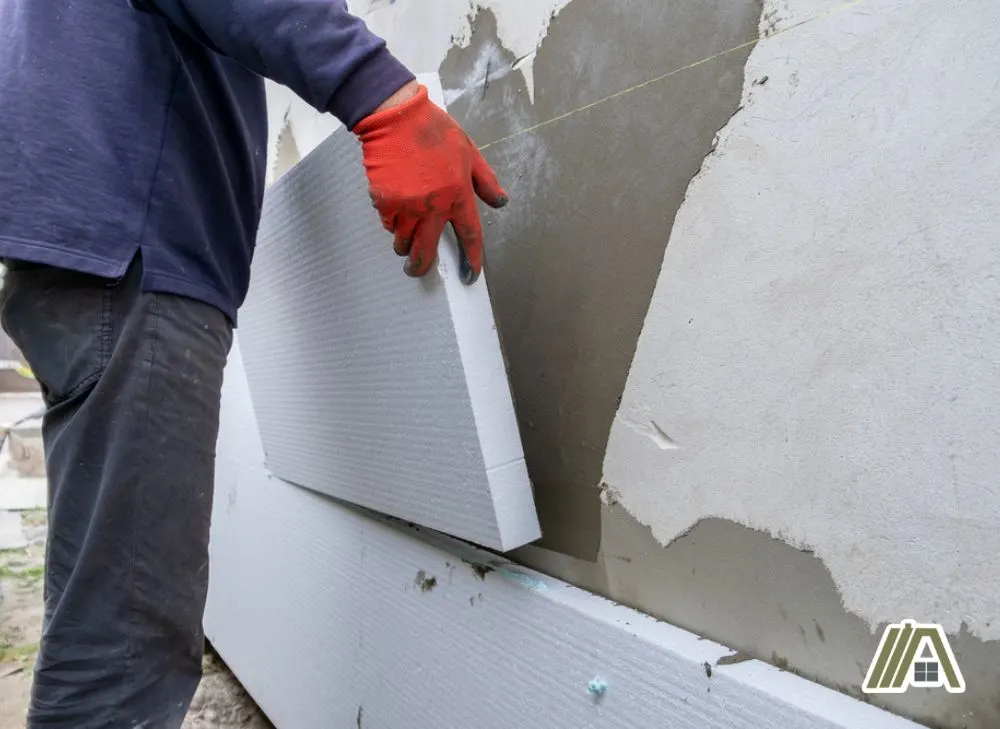
You also do not have to worry about compressing it during installation, whereas most insulation batts get partly compressed when stapled to the wall.
Basically, rigid foam board is dense and already compressed. It comes in different thicknesses (most often 2 inches thick) and can be easily layered without worrying about compressing the board underneath.
The one thing to note about foam board is that you cannot leave it exposed. Building code requires you to have a thermal barrier for fire safety.
Compression Reduces R-Value
Because compression affects the way that the materials act as insulators, it reduces the R-value of the material.
The following tables calculate how much the R-value decreases when different types of insulation are compressed by a certain percentage.
Calculations are based on charts provided by manufacturers and contractors. Numbers will vary by product and situation.
Spray foam and rigid foam boards do not have tables because compression is not a serious enough problem for the manufacturers of those materials to provide data about it.
Fiberglass
| Compression Percentage | R-Value Reduction |
| 2 | 2.7% |
| 5 | 4% |
| 10 | 6% |
| 20 | 17% |
| 50 | 44% |
| 60 | 50% |
| 80 | Data is insufficient to determine this percentage; suggests very few people attempt to compress fiberglass more than 60%. |
Cellulose
| Compression Percentage | R-Value Reduction |
| 2 | 6% |
| 5 | 14% |
| 10 | 20% |
| 15 | 25% |
| 20 | 31% |
| 50 | 60% |
| 80 | 85% |
Mineral Wool
| Compression Percentage | R-Value Reduction |
| 2 | 2% |
| 5 | 5% |
| 10 | 9% |
| 20 | 16% |
| 50 | 38% |
| 80 | 70% |
Natural Fiber
The following table is specifically for sheep wool insulation, one type of natural fiber insulation. Other materials like cotton, hemp, or straw may yield different results.
| Compression Percentage | R-Value Reduction |
| 2 | 0.5% |
| 5 | 1% |
| 10 | 2% |
| 20 | 4% |
| 50 | 19% |
| 80 | 60% |
Plastic Fiber
| Compression Percentage | R-Value Reduction |
| 2 | 0.5% |
| 5 | 1.5% |
| 10 | 4.5% |
| 20 | 7.5% |
| 50 | 24% |
| 80 | 57% |
Sources
https://forum.nachi.org/t/compressed-insulation-r-values/73721/13
https://andersonenergy.com.au/roof-insulation-compression-calculator/
https://insulationinstitute.org/wp-content/uploads/2016/08/Compressed_R_values.pdf
https://www.accurateinsulation.com/blog/how-much-does-cellulose-insulation-settle/
https://www.daviddarling.info/encyclopedia/P/AE_plastic_fiber_insulation.html
